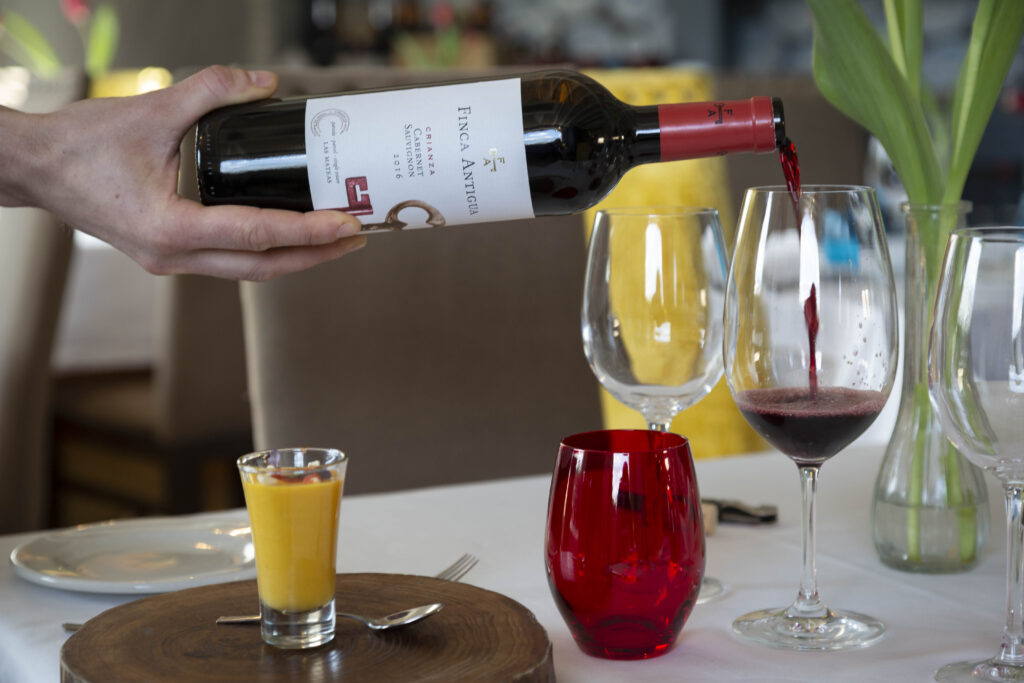To begin with, the word pairing is controversial in itself, as many find it ugly and empty. The truth is that most experts, critics and aficionados opt for terms such as ‘harmony’, ‘chord’ or ‘accompaniment’. Also when the verb maridar is used, it is preferred to use ‘acompañar’.
But let’s take it one step at a time. Food and wine pairing is the process of ‘marrying’ a food with a wine with the intention of enhancing the colors, textures, flavors and aromas of both. But the fundamental thing is to create new sensations, both in the tasting of the wine and the food with which it is accompanied.
The truth is that the pairing of wines is a point that creates great controversy. Leaving aside the old-fashioned maxim that ‘fish should be paired with white wines and meat with reds’, the reality is that the boom of new grape varieties, wineries and wines that has been experienced in recent years, together with the great moment that gastronomic culture is experiencing, has made the questions about the harmony of wines and food go much further.
In any case, it must be clear that the pairing, although there are certain rules, is a matter of taste. When it comes down to it, the choice of wines will depend on the type of food to be prepared, the way it is prepared and, of course, personal taste.
And once pairing is understood as a task of experimentation in which no one should be closed to anything, there are certain tips that can be followed to understand how it works.
First, think of the elements that make up a menu as an overall experience. As for the wine, as a general rule, a fuller-bodied wine should never be served before a lighter wine, as there is a risk that the second wine will be insipid. For this reason, the menus are ordered according to the intensity of the dishes and, in the same way, the wines that accompany them are also ordered.
This is why, in general, starters and first courses are accompanied by white or rosé wines, followed by young red wines, more mature red wines and, finally, the menu is topped off with fortified and sweet wines.
Secondly, we must be very clear that in matters of pairing, the concept of balance is fundamental, and for this we must first understand the weight of the food and the wines.
In the case of food, the weight is defined by the raw materials used to prepare the dish, the amount of fat, the intensity of the flavors of the different elements…
In the case of wines, it is determined by body and intensity. And this is defined by the alcohol content, tannin concentration, the grape varieties used in its production, the aging time or even the region where the wine was produced.
In general, it can be said that young whites are the lightest, followed by more structured whites and barrel-fermented whites. In the same group would be some rosés. Finally, among the reds, the most important wines are the grand reserves, reserves, crianzas and young wines.
Thirdly, dishes can also be harmonized with wines according to the principles of association or contrast.
In the first case, the aim is for the dishes and the wine to complement each other. It can be associated by color, temperature, texture, flavors… In the second, the opposite is done, seeking balance between dishes and wine through opposite sensations. Here a very recurrent example is to harmonize very strong and salty cheeses with sweet wines.
Fourth, priority should be given to the way food is cooked. It is no secret that grilling meat is not the same as preparing it in a stew or accompanying it with a very spicy sauce. In general, the complexity or simplicity of the dish should be balanced by the choice of wine.
And finally, remember that, as with many other things, food pairing is also a matter of taste. In the end, it all depends on one’s own experience and experimentation by combining different flavors, colors, textures and aromas.
Blog
Pairing, the harmony between wine and gastronomy




